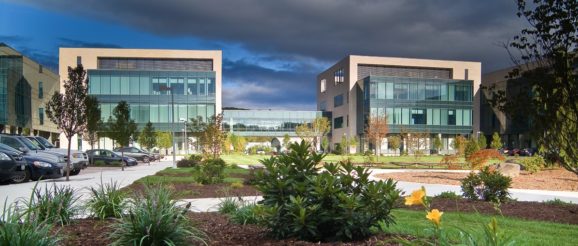Without more innovation à la Dupixent, Regeneron could be in trouble: Report

Regeneron has long fashioned itself as a leader in the development of antibody-based medicines to treat a range of diseases, with recent successes like Eylea to treat age-related macular degeneration and Dupixent for eczema and nasal polyps driving revenues up 14% last year to $6.7 billion.
So why has Regeneron’s stock collapsed more than 30% since March, when it was trading at $440 a share? Analysts at SVB Leerink believe Regeneron has lost its edge in antibody development—and investors are recognizing that its growth potential may be limited as a result.
“Apart from Dupixent, the company’s commercial products have been antibodies against known targets with relatively modest differentiation from their established competitors,” SVB Leerink wrote in a report sent to clients Tuesday.
Regeneron has tried to differentiate its antibody approach. For example, it’s developing bispecific antibodies with CD3 or CD28, SVB Leerink said, “but even this capability is not obviously differentiated from the capabilities at Amgen, Roche,” and other companies, the analysts added.
In scrutinizing Regeneron’s near-term pipeline, as well as its recent releases, SVB Leerink analysts were disturbed by the company’s reliance on “fast followers” or compounds that are “modestly differentiated,” the report said.
Take Regeneron’s new skin cancer drug Libtayo, for example. It was the sixth PD-1 inhibitor on the market and the first approved to treat cutaneous squamous cell carcinoma. Regeneron hopes to tack on an approval in previously untreated lung cancer, but that would pit Libtayo against Merck & Co.’s blockbuster Keytruda—a challenge to be sure. All in all, Regeneron’s “development strategy may be suffering from commoditization,” SVB Leerink said.
SVB Leerink spots major challenges ahead for Regeneron’s near-term pipeline. Its cholesterol drug evinacumab, which has completed phase 3 testing, is the only late-stage antibody for the rare disorder homozygous familial hypercholesterolemia, but other companies are moving ahead with different mechanisms of action against the same disease, like RNAi and antisense. Therefore “investors are unlikely to be excited about a new cardiovascular drug, and are more likely to consider this asset as a misplaced opportunity,” the analysts said.
Even Regeneron’s established blockbusters are facing some significant challenges, SVB Leerink said. Eylea, which brought in $4.1 billion in sales last year, will grow through 2022 but then likely face competition, particularly from Novartis’ brolucizumab (RTH258), the analysts predicted. In April, Novartis scored a priority review from the FDA for its entrant, setting it up for possible approval by the end of the year.
Then there’s Dupixent. SVB Leerink expects it will bring in $2.8 billion next year and peak at $6.5 billion. But even that blockbuster has its downside, namely Regeneron’s development partnership with Sanofi, SVB Leerink pointed out. Sanofi will take home half of Dupixent’s haul, so the product’s success “barely offsets” the risk to Eylea, the analysts concluded.
To drive home the challenges Regeneron is facing, SVB Leerink compared the company to Tivo, the television-recording gizmo that became a huge hit in the early 2000s, but then quickly fell out of favor when video streaming became the new norm. Antibody development is now a commodity, the analysts said, leaving them with a burning question: Is Regeneron “becoming the Tivo of biopharma?”
